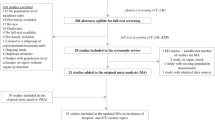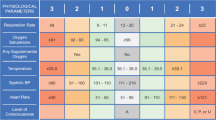Abstract
Introduction:
The role of trauma documentation systems for trauma research has continuously increased since the first trauma registries were developed in the late 1980s. Data acquisition and processing improved highly, partly because modern computer and network technologies offer new approaches. International comparison is important for the learning process and the investigation of differences in the mechanisms of injury, rescue systems and treatment protocols. We demonstrate keypoints of the learning curve thus supporting a further spreading of trauma registries.
Methods:
Seven exemplary trauma registries from the United States, Canada, Victoria (Australia), United Kingdom, France, Germany and the new European Trauma Audit and Research Network registry were analyzed according to their development until the current status. Special investigations were conducted for data acquisition, inclusion criteria and the volume and characteristics of patient data.
Results:
We found a clear overall beneficial influence of the documentation systems on the respective trauma system. Data acquisition displayed a wide range of difference from paper forms being entered into a centralized database by hand to direct entry of the data into the database by a local user via an Internet platform. Some systems copy computerized patient data from local hospital systems. Two registries are available in two languages. One has the option to add further languages as demanded. Datasets are comparable in terms of general data and a compulsory trauma diagnosis. Still, the details of the documented period of care and the inclusion criteria differ considerably.
Discussion:
We describe the important role of several trauma registries within a trauma care system. Although the success is hard to measure, related publications, continuous growth, the official use for quality control and the demand to participate by other countries stress their wide spread acceptance (secondary internationalization). These advantages make trauma registries a valuable tool in many countries.
Similar content being viewed by others
Author information
Authors and Affiliations
Consortia
Corresponding author
Rights and permissions
About this article
Cite this article
Probst, C., Paffrath, T., Krettek, C. et al. Comparative Update on Documentation of Trauma in Seven National Registries. Eur J Trauma 32, 357–364 (2006). https://doi.org/10.1007/s00068-006-5113-6
Received:
Accepted:
Issue Date:
DOI: https://doi.org/10.1007/s00068-006-5113-6




